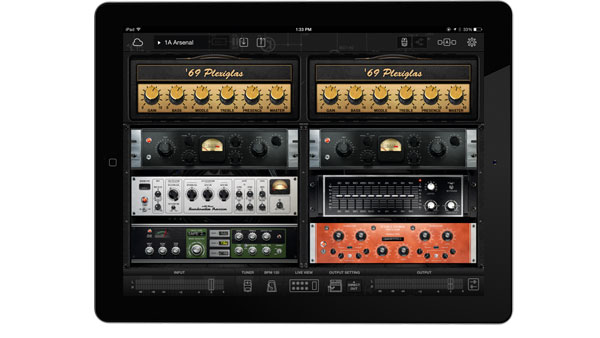MusicRadar Verdict
Quality amp and effects app for your iPad that's packed with tonal options.
Pros
- +
Nice choice of amps and effects. MIDI control. Clear and detailed display.
Cons
- -
Not much.
MusicRadar's got your back
Positive Grid describes Bias FX as "the world's first cross-platform, amp-and-effects processor".
While the plug-in version for computer DAWs is released later this year, for now, it's the iPad version that has been released first, in a similar way to how the original Bias amp designer (now called Bias Amp) was rolled out.
Where Bias Amp offers amp simulation only, Bias FX in some ways has more in common with the company's JamUp multi-effects processor, which has always offered amps and effects.
"Live use is a possibility, especially as there's MIDI control and a Live View mode for recalling presets"
However, the company says that this new app is a different beast, designed from the ground up with the emphasis on professional sound quality using its latest algorithms.
Bias FX offers a full dual-path guitar signal chain derived from models of 12 amps, 25 effects pedals and five rack processors. There's also full integration with Bias Amp, which means that you can import any Bias Amp amp models and move any of the 12 Bias FX amp models over to Bias Amp for the detailed editing/amp building that it offers.
Bias FX also features Inter App Audio compatibility, which will let you insert other IAA apps in any place in your Bias FX signal path, creating more complex tones.
In Use
Using very clear and detailed graphics, Bias FX offers two main viewing options: one showing the signal path, the other a pedalboard. It's easy to move pedals and amps around and add/delete them from the signal path with drag-and-drop moves.
Adjustment of any parameters is easily carried out by tapping on any pedal to maximise its size and then just swiping your finger along to move the knobs. Dual signal paths with two amps running in parallel are easily set up with a 'Splitter' modules at one end of the parallel path and a 'Mixer' at the other to set up wide stereo sound if desired.
Your sounds are stored as presets in banks of 32 and you get one factory preset bank and any amount of user banks. The content of those banks can be expanded by taking advantage of Positive Grid's ToneCloud, an ever-expanding user library of edited virtual pedalboard rigs to be shared.
Using headphones for practice or recording (with Bias FX inserted into a DAW app) is an obvious role, but there are various options to optimise the output sound to suit a guitar or power amp. This makes live use a possibility, especially as there's MIDI control and a Live View mode for recalling presets and toggling effects with a single tap.
With a nice variety of amps and just about all effects genres represented with some based on classic pedals, Bias FX gives you a great set of tonal options if you want to get into iPad-based guitar playing/recording.
For those who may have already bought Bias Amp, it's a very practical Bias add-on, bringing a complementary set of effects for a fuller tonal palette.
Trevor Curwen has played guitar for several decades – he's also mimed it on the UK's Top of the Pops. Much of his working life, though, has been spent behind the mixing desk, during which time he has built up a solid collection of the guitars, amps and pedals needed to cover just about any studio session. He writes pedal reviews for Guitarist and has contributed to Total Guitar, MusicRadar and Future Music among others.
“We were arguing a lot and we were miserable”: How Green Day exceeded expectations with their most ambitious song
"There’s plenty for us guitarists to learn – and ‘less is more’ is the overriding lesson": how to play like George Harrison on The Beatles' Abbey Road
“They didn’t like Prince’s bikini underwear”: Prince’s support sets for the The Rolling Stones in 1981 are remembered as disastrous, but guitarist Dez Dickerson says that the the crowd reaction wasn’t as bad as people think











